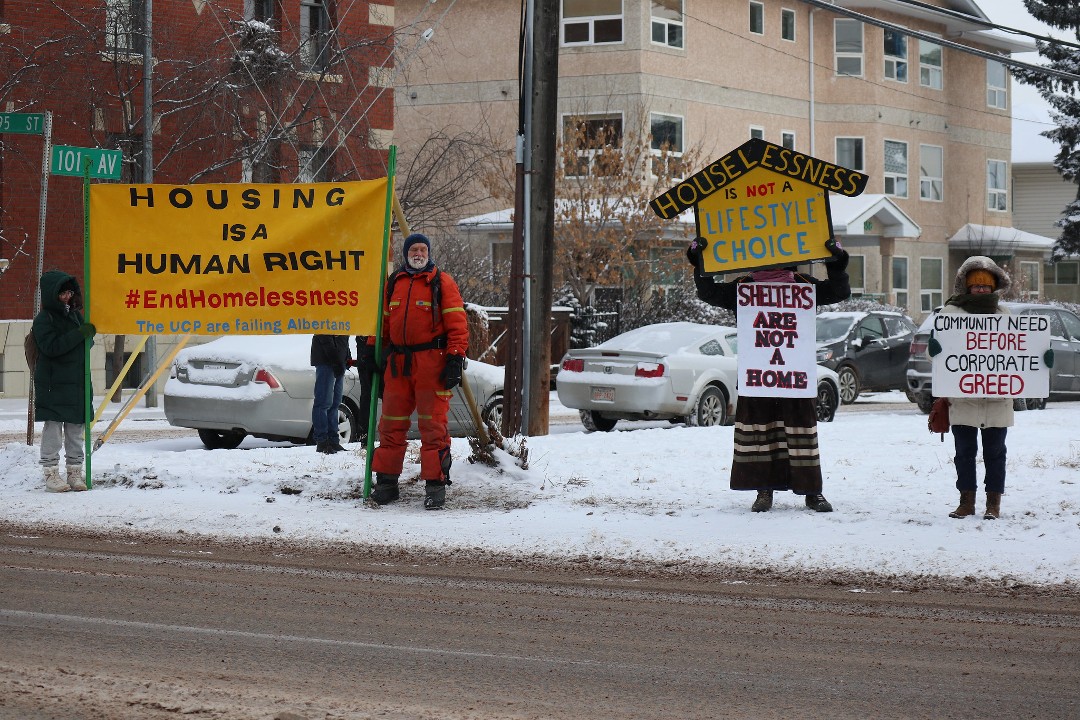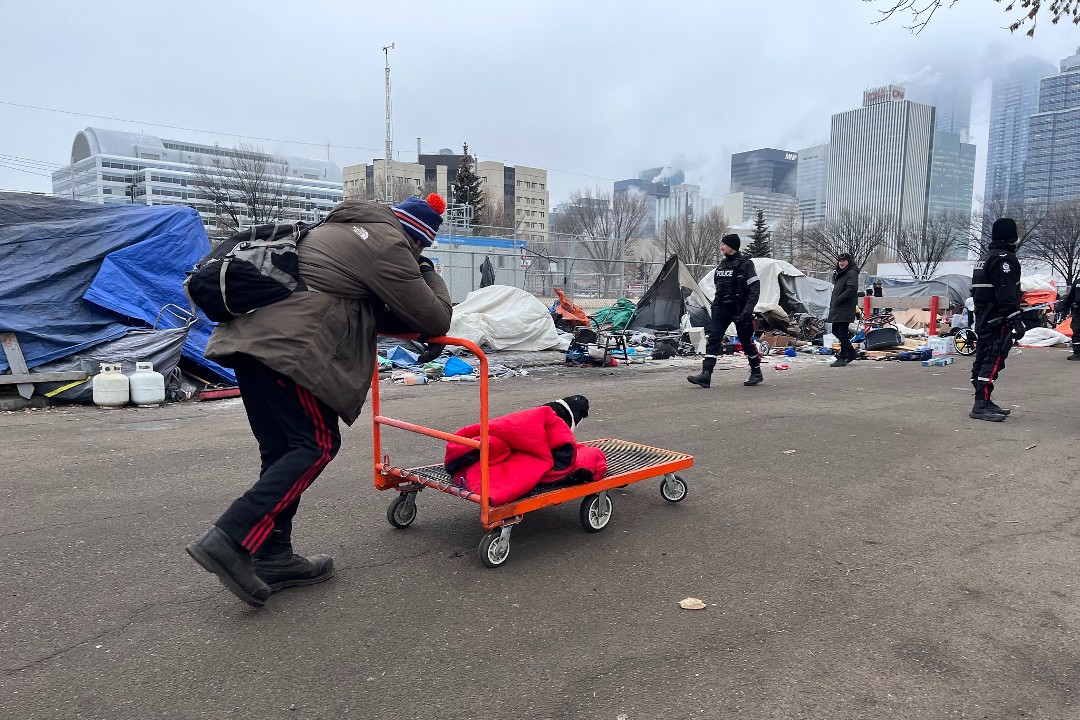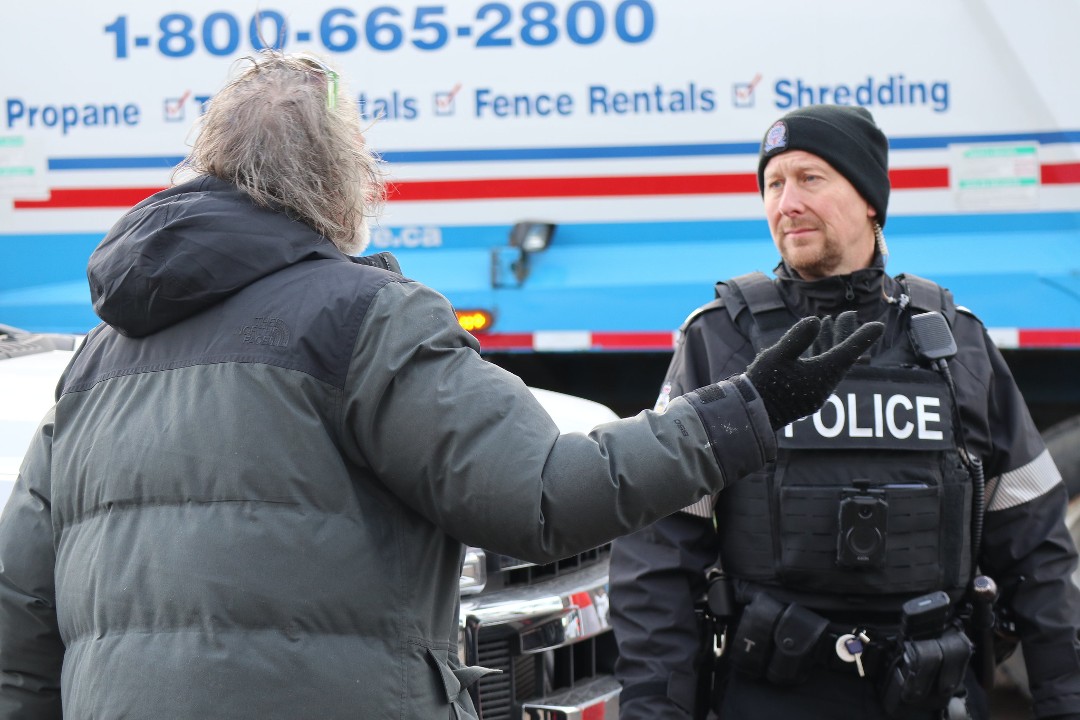The question of whether Edmonton's homeless shelters can accommodate everyone who needs them is central to ongoing court battles over encampment evictions. It's also at the heart of political tensions between the city and the province, which continued to spill over as city council debated on Jan. 15 whether to declare an emergency on housing and homelessness. And the need for temporary relief is particularly acute with temperatures at -30C or colder.
The answer is complex. Here's a look at what we know about the supply of shelter space and the factors that affect demand.
Is there enough shelter space in Edmonton?
On Jan. 9, the province said there were more than 1,550 spaces available in Edmonton, which is still short of the 1,700 spaces that were to be available by Nov. 1.
"Funding for the 1,700 shelter spaces has flowed from the province to shelter operators," Jason Nixon, the minister responsible for housing and homelessness, told Taproot in a Jan. 5 email. "There are currently over 1,400 shelter spaces in Edmonton. Another couple hundred spaces will be opening early this year to reach 1,700 spaces. Our department watches shelter utilization numbers on a daily basis and if capacity becomes an issue, our government would take immediate action to make sure people are not turned away."
A Postmedia count of shelter spaces found the number stood at 1,429. Meanwhile, evidence of people unable to enter shelters has been extensively reported by Ricochet Media reporter Brandi Morin. Further, the Bissell Centre told CBC it had accommodated 187 people on Jan. 13 and 230 on Jan. 14, well above its capacity of 135 people.
When it comes to shelter demand, Homeward Trust Edmonton tracks the number of people experiencing homelessness through its Edmonton By Name List. Its list as of Jan. 6 pegged the city's homeless population at 3,051. Of that total, 1,733 people were provisionally accommodated, 519 were using shelters, 694 were unsheltered, and the status of 105 was unknown.
A City of Edmonton spokesperson told Taproot via email that Homeward Trust is "the system planner that coordinates responses to homelessness in Edmonton amongst all sector partners, including shelter operators." Part of that coordination is a data analytics page that tracks population demographics, numbers of people newly experiencing homelessness, and more. Until Jan. 9, Homeward Trust's data included a detailed breakdown of the available space in Edmonton's shelters. A Homeward Trust spokesperson said the agency only used data provided by the province on this page, and that the province asked the organization to take the shelter data down on Jan. 9.
At a press conference on Jan. 12 in Calgary, Nixon said the province took this action because Homeward Trust's numbers were "wrong." He added that this is not Homeward Trust's fault. "They don't have access to the entire shelter system, only the provincial government does, and certainly I think they've done their best," Nixon said. "We're trying to get those numbers up to date. But with the large amount of new shelters that came on, the numbers were off by hundreds of beds."
In an op-ed published on Jan. 15, Nixon said shelters in Edmonton "remain under capacity" and will not turn people away. "All shelters in Edmonton are operating 24/7, ensuring that everyone who needs a warm place to stay in the city has somewhere to go," he wrote. "Casting doubt on the availability of shelter spaces is dangerous, especially during periods of extreme cold, and we must not deter anyone from asking for a place to stay."
Homeward Trust told Taproot that it expects a reporting page "for all shelter information will be (made) available by (the Government of Alberta), and we will provide a link to it on our website as soon as it becomes available." As of Jan. 15, the province did not have a web page listing detailed shelter capacity for Edmonton. A spokesperson in Nixon's office told Taproot a reporting database is in development.

Protesters gather at the edge of the encampment at 95 Street and Rowland Road before the camp was dismantled and cleared on Jan. 10. (Paula Kirman/Flickr)
Why do some avoid shelters?
Regardless of whether space exists, some living rough choose to avoid shelters unless they must use them to survive the extreme cold.
Staying in a shelter is not a simple question of space, said Jim Gurnett of the Edmonton Coalition on Housing & Homelessness. He told Taproot that Edmonton's shelters are often large facilities where people are "warehoused" in bunks or on mats on the floor and can feel squished together. "I'm told by people that do use shelters that there's lots of violence and drug use in some of them," Gurnett said. "They're not a place you can get comfortable and, given the strict entry requirements for shelters, for many people, camping may offer lifestyle and practical benefits that shelters cannot."
Rachelle Gladue, co-founder of Tawaw Outreach Collective, said many shelters are not at a standard that is ethical. "Mat programs are not a dignified approach," Gladue said. "You're getting this small plastic mat on the ground that you're sleeping on… concrete, usually. It's cold. It's unclean. There's not (much) space between you and the other people. It's loud."
For Indigenous people, treaty rights are also a tension in the shelter system. "When it comes to Indigenous people, we have treaty rights where we're supposed to be protected with our collective identity," Gladue said. "And being able to be in encampments in a collective community is part of Indigenous peoples' traditional ways of being and living. Often people find that safety within encampments that they can't find in a shelter."
Gladue said an Indigenous-focused shelter with staff "adequately trained in cultural safety and cultural sensitivity would be huge for Indigenous people." Homeward Trust data shows that people who identify as Indigenous make up 56% of Edmonton's homeless population.
People hoping to stay at shelters may need to queue for hours and can still be turned away if they do not meet requirements. Graphic evidence of these lineups has been reported.
When people do manage to get into shelters, they don't always want to come back. One woman facing eviction from an encampment told Postmedia that she is frequently assaulted in shelters, which is why she fashioned a home behind the Bissell Centre. Another woman added that a lack of cleanliness is a barrier to using shelters.
To this point, Gurnett said shelter standards should be improved and enforced. "Lots of creative things could be done" to make shelters more dignified for users, he said, suggesting smaller shelter spaces, tiny homes, and spaces that allow for community.
Coun. Andrew Knack has argued Edmonton's shelters need minimum standards, which the province would have to enforce. Knack said each shelter determines its own standards aside from areas where it must comply with Alberta Health Services rules or procedures.
A previous council created Edmonton's proposed minimum standards. "Although the City of Edmonton worked to create these, we cannot mandate them," Knack wrote. "Any change in standards is within the legal authority of the provincial government but we felt that by creating new standards, they would have a good place to start."

A resident of the encampment west of the Bissell Centre pushes their dog on the cart they used to move belongings as the camp was being cleared on Jan. 3. (Paula Kirman/Flickr)
What do shelters require?
People seeking shelter with the Mustard Seed, the Youth Empowerment Support Services youth shelter, and the Women's Emergency Accommodation Centre are not allowed to use drugs or alcohol on the premises, but they are not required to be sober to be granted a space. People who visit shelters typically have to store personal belongings in a box or a locker, if one is provided (it is not always so, meaning staying in a shelter can mean losing one's things without having somewhere safe to put them). Shelters often lack space to accommodate other items.
At YESS, people who stay overnight have to be 21 or younger, but other drop-in services are available for people up to the age of 25. The WEAC is restricted to women and gender-fluid people only. The Mustard Seed's women's shelter is available to women only.
Hope Mission spokesperson Keith Lee told Taproot in an email that the shelter does not require people to be sober to enter. Lee said Hope provides space for belongings, does not confiscate peoples' substances upon entry, offers spaces for men, women, and family who wish to stay together, and has a gender-neutral space.
"We welcome everyone to our doors," Lee said. "We do not discriminate on the basis of religion and provide services to anyone seeking shelter, regardless of their religious affiliation."
Mark Cherrington, an advocate who works with vulnerable Edmontonians and is also vice-president of the Coalition for Justice and Human Rights, has criticized the Hope Mission shelter for faith-based practices, arguing it is "intrusive" and can deter people from using the shelter.
"Obviously, the medical staff and program do not share any of those values or opinions with clients," Cherrington told Taproot. "However, a program like the Breakout Program, their male addiction program, on-site is very focused on faith."
The Hope Mission website describes its addiction recovery care as being "rooted in the life-changing power of the Gospel of Jesus Christ, and from that source we seek to meet not only the physical needs of our guests but spiritual needs as well."
Shelters, for their part, work to get people inside. The Bissell Centre said it has a team of seven who work in areas where homeless people tend to congregate and helps people access housing.
The Mustard Seed has a team called SeedReach that connects people with housing and support to get it. Homeward Trust's coordinated access team has a desk in the Stanley A. Milner Library to match people to housing programs. Edmonton has a partnership with Bent Arrow Traditional Healing Society that reaches out to people in transit spaces.
The city is also pushing people toward shelters. It runs an overnight shuttle service to transport people to available emergency shelters and adds a third bus to the service during periods of extreme cold. City council approved an enhanced encampment response plan in April 2023 in which workers visit encampments and target 100 people with support to get them into housing faster.

A community member argues with an EPS officer at the dismantling of the encampment near Hope Mission — Herb Jamieson on Dec. 30. (Paula Kirman/Flickr)
What's next?
City council's emergency meeting on Jan. 15 adjourned after more than two hours of debate without resolving whether to declare an emergency and create a task force to address solutions with $3.5 million in seed money. It is to resume on the afternoon of Jan. 16.
Court of King's Bench Justice Jonathan Martin is expected to rule on Jan. 16 whether the Coalition for Justice and Human Rights has standing as it seeks an injunction to stop the city from dismantling encampments. The City of Edmonton has argued the lawsuit should be dismissed. Susan McGee of Homeward Trust supports the city's position, arguing that halting the teardown of camps could stand in the way of connecting people with housing.
